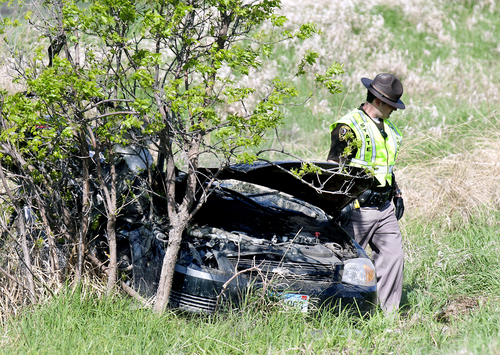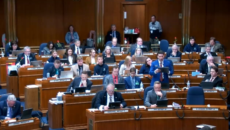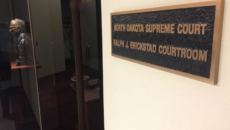How Many North Dakota Lives Could Oil Pipelines Be Saving?

One continually frustrating aspect of the North Dakota media’s coverage of rising traffic fatality rates is the fact that they refuse to report those rates in the context of rising levels of traffic on the road. Yes, fatalities are up, but so are the number of drivers on the road and the number of vehicle miles driven. Sensationalizing rising fatality numbers might sell newspapers by scaring the public, but the public should know that statistically they’re really not all that more likely to be killed on the roads.
That being said, some of the more recent stories about North Dakota’s rising traffic fatalities are interesting. The Fargo Forum, which reports the story under a predictably intemperate headline decrying “consequences of the boom, notes that it’s not just road fatalities that are up but fatalities caused by collisions between trains and other vehicles:
Train-related fatalities also spiked statewide. Numbers kept by the Federal Railroad Administration show that, through October, 10 people died on a railway in North Dakota in 2012. That’s up from only one railway death in 2011 and five in 2010. The last time the state had ten railway deaths was in 1980, according to FRA data that dates back to 1975.
The oil boom, and government sandbagging of efforts to build out pipeline infrastructure, has caused a spike in the number of trains running on North Dakota rails in addition to a spike in the number of trucks pulling oil. Both are contributing in significant ways to traffic fatalities in the state.
The question is: How many lives could be saved if the government would clear the way for pipeline infrastructure? Specifically, how many North Dakota lives has President Obama’s decision to delay the Keystone XL pipeline cost us?
A year ago a press release sent out by Senator John Hoeven’s office indicated that the oil the Keystone pipeline could handle would have a significant impact on road traffic in the state. “The increase in North Dakota takeaway would be the equivalent of replacing approximately 500 truckloads of oil per day from roads in western North Dakota, relieving pressure on infrastructure and improving public safety,” read the press release.
That same would be true of other pipelines which could be built in the state.
Obviously, there are more challenges to building a pipeline than those coming from the political realm, but perhaps our policymakers should be asking what government red tape is holding pipelines is, and how that red tape might be cleared.
Because it’s clear that lives are on the line.
Update: Remember what Vice President Joe Biden said earlier this week. “If your actions result in only saving one life, they’re worth taking.” Of course, he was talking about gun control, but do you think the Obama administration would apply that thinking to building a pipeline?







